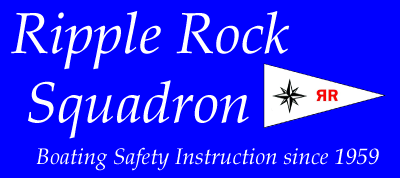Introduction to Collision Regulations - There is a risk of collision, what do we do now? (restricted visibility)
Caution:
- The following information has been simplified so we can give you a basic introduction using (mostly) non-technical language. Review the actual Regulations for in-depth information (we have noted the rule number, in square brackets, where practical). The Regulations can be found on our links page.
- A lot of effort has been made to ensure the information is correct, but errors may occur (If you find one please leave a message for our Webmaster).
- This information is intended for boaters on the BC Coast; it does not address modifications for vessels operating in the Great Lakes Basin.
Restricted Visibility, whether it is because of fog, snow, rain or smoke so that you cannot see the other vessel, uses very different rules [Rule 19] than the rules for vessels in sight of each other.
- Safe speed changes. A rule of thumb is that you should be able to stop in half the distance that you can see, and you should be ready for full astern at any time (dingy tow line?).
- While effective look-out alway requires listening, it becomes much more important, as radar doesn't always see everything.
- If using radar plotting, and determine there may be a risk of collision, any course alteration should be to starboard for a vessel forward of the beam (unless overtaking), and not towards a vessel abeam or abaft the beam.
- Unless you are sure risk of collision does not exist, if you hear the fog signal of another vessel forward your beam, or if you cannot avoid a close quarters situation, you must reduce speed to the minimum you can maintain your course. If necessary stop, and in any event navigate with extreme caution until danger of collision is over.
- There are two exceptions to the general rules regarding restricted Visibility. Narrow Channels and Traffic Separation Schemes rules apply in any condition of visibility (see paragraphs near the bottom of advanced situations for an overview of those rules). Therefore, in general terms, smaller vessels still stay out of the way of vessels that need to stay in the Narrow Channel or Vessels using the Traffic Separation scheme.

Some common fog signals [Rule 35]
- Power driven vessel making way - one prolonged blast (4-6 seconds) every 2 minutes
- Power driven vessel underway but not making way - two prolonged blasts every 2 minutes
- Sailing vessel - one prolonged blast followed by two short blasts every two minutes
- Vessel less than 12m in length, making way or underway - an efficient sound signal every two minutes
- Anchored vessel, greater than 20m in length but less than 100m - ring bell for 5 seconds every minute
- Anchored vessel less than 20m in length - efficient sound signal every 2 minutes
- Towing, Fishing, Not Under Command or Restricted in ability to manoeuvre - one prolonged blast followed by two short blasts every two minutes
- Towed vessel (or last vessel in tow), if manned - one prolonged blast followed by three short blasts every two minutes
Return to Basic Introduction to the Collision Regulations
